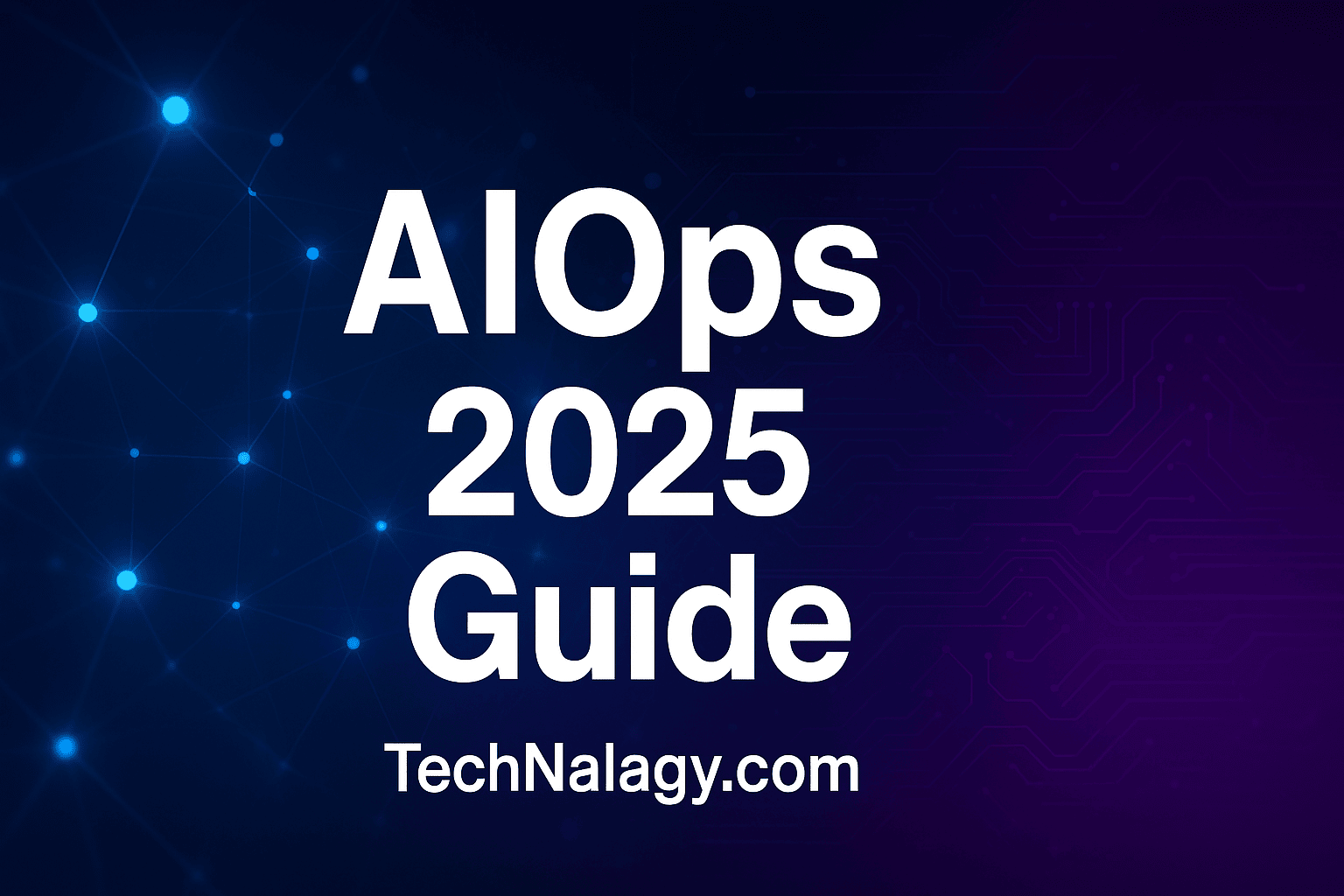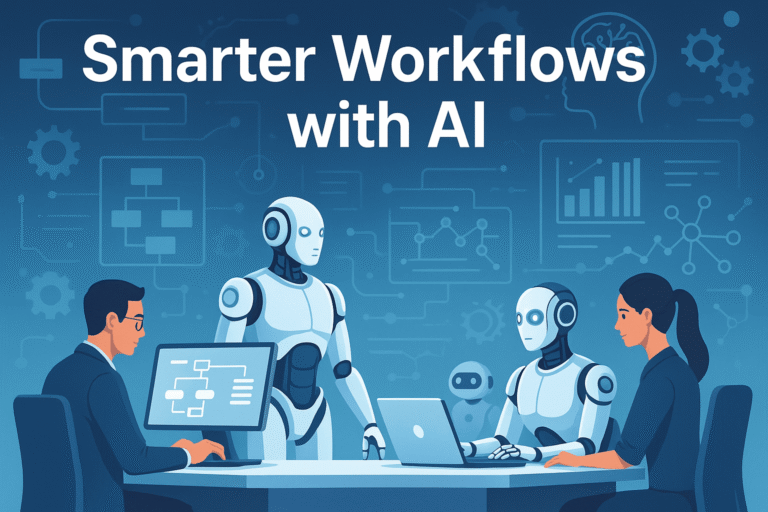What is AIOps? Benefits, Use Cases, and Real-World Examples (2025 Guide)
Introduction
The landscape of IT operations is evolving rapidly, and 2025 is shaping up to be the year when AI-powered operations truly go mainstream. Traditional monitoring tools can no longer keep pace with the scale, complexity, and speed of today’s digital infrastructure. Organizations now need smarter systems that don’t just detect issues but also predict, prevent, and resolve them automatically.
This is where AIOps (Artificial Intelligence for IT Operations) plays a crucial role. In this comprehensive guide, we’ll break down what the technology is, how it works, the key benefits, top use cases, and real-world examples you can learn from. Whether you’re an IT manager, DevOps engineer, or business leader, this 2025 guide will show why intelligent IT operations are becoming the future of enterprise success.
What is AIOps?
AIOps stands for Artificial Intelligence for IT Operations. It is the application of AI, machine learning, and big data analytics to automate and enhance IT operations. The term was first coined by Gartner in 2017, and since then, it has evolved into a must-have solution for enterprises managing increasingly complex IT environments.
Unlike traditional monitoring systems that flood teams with endless alerts, AI-driven operations platforms can correlate data across multiple sources, recognize patterns, predict potential issues, and often resolve them automatically. By 2025, AIOps has firmly established itself as a cornerstone of modern IT management strategies.
How AIOps Works
At its core, AIOps integrates three major technologies:
- Artificial Intelligence (AI): Enables intelligent decision-making.
- Machine Learning (ML): Continuously improves through pattern recognition.
- Big Data Analytics: Processes massive volumes of log data, metrics, and events.
The workflow of AIOps typically follows these steps:
- Data Collection from servers, applications, networks, and cloud platforms.
- Correlation & Pattern Recognition to filter out noise and connect related events.
- Anomaly Detection to identify issues before they escalate.
- Automation & Remediation where repetitive tasks or fixes are executed automatically.
For example, if a server shows unusual CPU spikes, AIOps can detect the anomaly, predict a potential failure, and take corrective actions — such as redistributing workloads — without human intervention.
Key Benefits of AIOps
1. Improved Incident Management
Modern IT operations tools help reduce alert fatigue by prioritizing critical events and filtering out unnecessary noise. This enables teams to detect and resolve incidents faster, minimize downtime, and maintain business continuity.
2. Enhanced Automation
With automation, IT teams can focus on innovation instead of repetitive tasks. AIOps often integrates with AI workflow automation tools to streamline ticketing, log analysis, and remediation processes.
3. Better Decision-Making with Data Insights
AIOps provides real-time analytics that help IT leaders make data-driven decisions. By identifying trends and predicting future issues, it ensures proactive IT management.
4. Scalability & Performance Optimization
As organizations move toward hybrid and multi-cloud setups, AIOps ensures seamless scalability by dynamically optimizing infrastructure performance.
AIOps Use Cases in 2025
Predictive Infrastructure Monitoring
AIOps forecasts hardware failures or system bottlenecks before they occur, allowing teams to take preventive measures.
Cloud Cost Optimization
By analyzing usage patterns, AIOps suggests cost-saving measures in cloud environments, such as shutting down unused resources.
Cybersecurity Threat Detection
Machine learning models in AIOps detect anomalies in network traffic, identifying potential security breaches in real time.
Application Performance Monitoring
Advanced IT monitoring solutions ensure applications run smoothly by tracking response times, latency, and user behavior — ultimately enhancing the customer experience.
DevOps & Continuous Delivery
Intelligent automation accelerates CI/CD pipelines by streamlining testing, deployment, and monitoring — ensuring both agility and reliability.
Challenges and Limitations of AIOps
Despite its benefits, adopting AI for IT operations comes with several hurdles:
- Implementation Complexity: Integrating AI-driven operations into legacy systems can be particularly challenging.
- Data Privacy Concerns: Sensitive business data requires strong governance.
- Over-Reliance on Automation: Full automation can be risky without human oversight.
- Skills Gap: IT teams often need training to effectively manage AIOps tools.
Best AIOps Tools in 2025
Several leading platforms dominate the intelligent IT operations landscape:
- Moogsoft: Known for event correlation and noise reduction.
- Dynatrace: Offers AI-driven monitoring for cloud-native environments.
- Splunk ITSI: Powerful analytics and real-time visualization.
- BigPanda: Specializes in root cause analysis and automated remediation.
Each tool has its strengths, and the right choice depends on your organization’s IT maturity and infrastructure.
Future of AIOps: Trends for 2025 and Beyond
As enterprises modernize, the adoption of AI-driven operations will accelerate further. Key trends include:
- Hybrid & Multi-Cloud Integration: Next-generation IT operations platforms will unify visibility across diverse environments, making it easier to manage hybrid and multi-cloud systems.environments.
- Generative AI in AIOps: Intelligent assistants will simplify troubleshooting.
- Business-Driven IT Operations: Intelligent operations solutions will increasingly align IT insights with broader business objectives, ensuring technology directly supports strategic growth. KPIs.
According to Gartner’s AIOps insights, the technology is set to become a standard feature in enterprise IT strategies, moving beyond monitoring into full-scale automation and decision support.
Real-World Examples of AIOps in Action
Banking and Finance
AI-driven IT systems help detect fraud in real time by analyzing unusual transaction patterns, ensuring compliance and strengthening security.
E-commerce
Online retailers rely on intelligent IT operations to optimize website uptime, monitor digital transactions, and improve checkout speed during peak traffic.
Telecom
Telecom providers leverage AI-powered operations for predictive maintenance of network infrastructure, preventing outages and reducing customer churn.
Conclusion & Key Takeaways
No longer just a buzzword, AI-driven IT operations have become a practical solution reshaping the industry in 2025. By leveraging artificial intelligence, machine learning, and automation, businesses can predict issues, reduce downtime, cut costs, and improve efficiency.
From predictive monitoring to cybersecurity, AI-powered operations are delivering tangible value across industries. However, organizations must address implementation challenges and upskill teams to fully unlock the technology’s potential.
As technology continues to advance, AI for IT operations will evolve beyond efficiency gains to become a true driver of business intelligence and competitive advantage. If your enterprise hasn’t yet explored AIOps, now is the time to take the first step.

Kamran Khatri is the founder of technalagy.com, where he shares insights on AI, future tech, gadgets, smart homes, and the latest tech news. Passionate about making innovation simple and accessible, he writes guides, reviews, and opinions that help readers stay ahead in the digital world.






